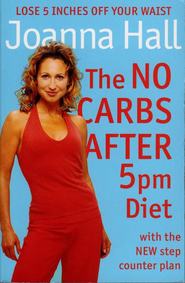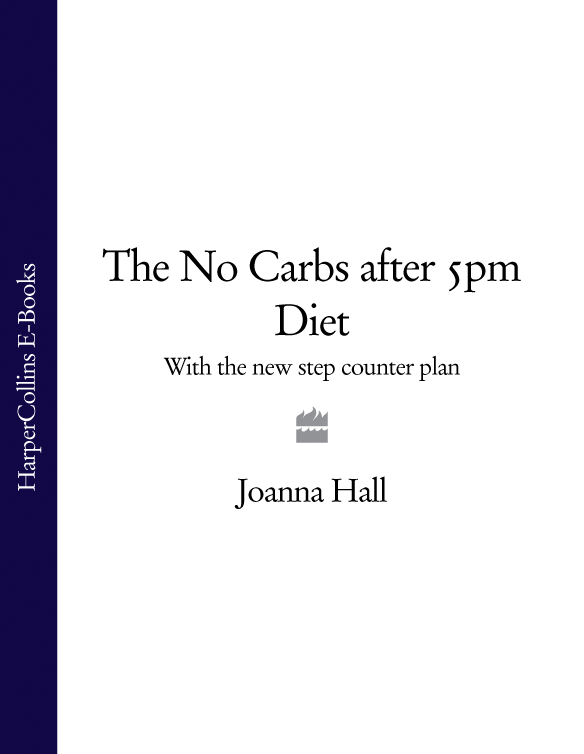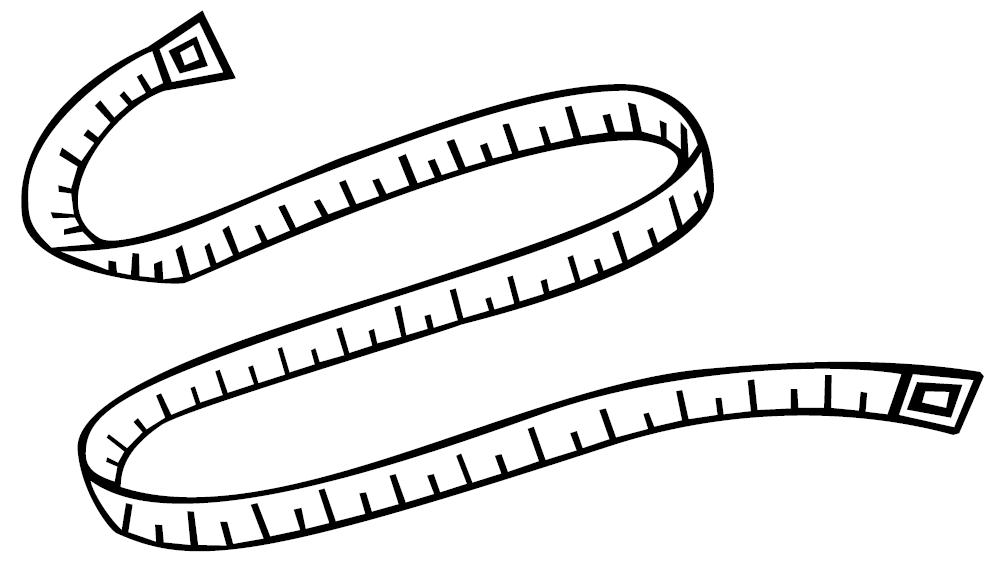
Полная версия:
The No Carbs after 5pm Diet: With the new step counter plan


Joanna Hall
The NO CARBS
AFTER 5pm
Diet
with the NEW step counter plan

SUCCESSFUL NO CARBS AFTER 5PM DIETERS
KATIE, 36: mum of 18-month-old Josh. ‘The baby belly won’t shift!’
Dropped 10 pounds and 6 inches off her waist.
TIM, THE DOCTOR, 42: ‘But I’ve never had to diet before.’
Dropped 7 pounds and 5 inches off his waist.
STEPH, 34: mum of three children under five. ‘I don’t have time to exercise.’
Dropped 7 pounds and 5 inches off her waist.
BRONWYN, 28: newly married doctor and dedicated carb lover.
Dropped 5 pounds and 6 inches off her waist.
ZITA, 39: music manager and rock chick mum of four.
‘I don’t do exercise.’
Dropped 10 pounds and 7 inches off her waist.
HENRY, 58: retired property lawyer. ‘You’re never too old to party!’
Dropped 9 pounds and 6 inches off his waist.
CARMEN, 24: secretary, loves her social life.
Dropped 5 pounds, 4 inches off her waist and 6 ½ inches off her thighs.
JO JO, 36: businesswoman and mum of two, a diet cynic.
Dropped 7 pounds and 4½ inches off her waist.
TASH, 26: administrator and Aussie traveller, loves her food ‘too much to lose weight’.
Dropped 4 pounds and 4 inches off her waist.
JUDITH, 68: ex-smoker, granny of seven. ‘Tried every diet there is.’
Lost 10 pounds and 7 inches off her waist.
Table of Contents
Cover Page
Title Page
Successful No Carbs After 5pm Sieters
Introduction
Part 1: How the Diet Works
1 Setting the Scene
2 Recording Your Progress
3 The Eating Principles
4 The Exercise Principles
Part 2: The Diet in Practice
5 The Eating Principles in Practice
6 The Exercise Principles in Practice
7 The Countdown Begins
8 Your Personal Daily Charts
9 The Step Trade Offs
10 Carb Curfew Recipes
– Meat Dishes
– Fish Dishes
– Vegetarian Dishes
11 Stop a Lapse Becoming a Collapse
12 Questions and Answers
By the same author
Copyright
About the Publisher
Introduction
Twenty-eight days is exactly four weeks. Just imagine: in four weeks you could have lost inches off your midriff. It is not impossible and you can do it. Twentyeight days is just long enough for you to get great results. In less than a month you can change your body, lose inches off your waist, feel your fitness levels soar and fit into clothes that look great. Your health will improve and you’ll enjoy so much more energy. In just 28 days …
I’m sure you’ve heard the Beatles’ song I Want to Hold Your Hand. Life is full of hurdles and sometimes we need someone to hold our hand to give us extra strength. Losing weight and keeping it off is a hurdle. In this book I want to hold your hand as you follow my diet and exercise plan, giving you my advice and guidance every step of the way.
My No Carbs After 5pm Diet works! It is based on my 28-day Carb Curfew Plan, which I run in London. You can feel confident that you are following a programme that works and delivers results. It’s been tried and tested in GP practices on men and women just like you. It has worked for them and I know it can work for you too. All you need to do is have some faith in me and in what I’m asking you to do, and give me a bit of commitment over the next 28 days.
The plan gives you clear information about what to do and why you are doing it. You’ll find lots of tips from my successful clients along the way, as well as my advice and experience from running weight-management programmes. Your success will involve a little planning ahead, being prepared and becoming empowered. So if you want to follow a plan that works, drop inches off your tummy, lose pounds on the scales and feel fantastic in just 28 days – come on – let’s get going!
Be active!

1 How the Diet Works

1 Setting the Scene
I am not going to wave a magic wand so you can experience the benefits of my 28-day diet without the effort. Putting in a little effort is very important for three reasons:
1 Making an effort means you value yourself. Achieving something with little or no effort often has no value and we don’t really appreciate it.
2 The diet is simple to follow. You’ll feel the benefits almost as soon as you start. What you may perceive as a little effort at the start of the plan will become part of a healthier lifestyle habit by the time you reach the finish line, without you even realizing it.
3 Your efforts will reap you major health improvements over the 28 days. As well as losing significant inches and weight, participants have recorded decreased blood pressure, improved cholesterol levels, improved moods, better sleeping patterns, better sex and greater energy.
“You’ll notice the difference in a week. The programme is so worth pursuing. My advice would be to get the first seven days done, and after that you’ll find it quite easy to follow. ”
At the start of every weight-management programme I run, the participants are always impatient to see their body change – they have heard about the fantastic results people have experienced and want to see and feel the benefits straight away. But we need to get one thing straight – and this is where the straight talking begins.
We may all have the desire to lose weight, to have that fabulous feeling of inches falling off, but the crux of the matter is how willing you are to fulfil that desire. Having the desire to lose weight and follow the programme will not get you anywhere without the willingness to put in a bit of effort. This means you will need to plan ahead a little, but I have taken all the hard work out and tried to make it easy for you.
WHAT WILL THE DIET DO FOR ME?
Many men and women have had fantastic success with the diet and I know you can too!








Everyone who has completed this programme with me has lost inches and felt fantastic.
“Lots of people have noticed the change in my body shape – I feel so much more sexy!”
HOW THE DIET WORKS
This diet is about getting results and making it work for you and the life you lead. It is a focused eating and walking plan designed to help you lose weight and inches, especially around your middle and waistline.
I am also concerned about you keeping the weight off long term. The National Registry of Weight Loss in Denver has compiled the details of people who have lost over 60 pounds in weight and kept it off for five years. And what is it that has helped these people succeed?



The principles of the diet and exercise plan are simple to put into practice. You’ll soon see how they work and how easily they can be slotted into your life. The menu plans in Chapter 5 put all the diet principles into practice for you, but are flexible enough to adapt to your own preferences.
“I loved the flexibility and the fact that the plan is not a rigid regime where you have to eat this food at 11am and that food at 4pm.”
The exercise plan is based on walking and five tummy exercises. That’s all – you don’t need a gym membership, expensive exercise kit or flashy trainers, just a pair of comfortable walking shoes and enough space on the floor to do your exercises. And absolutely anyone can do it – I promise you.
The diet runs over 28 days. You can follow the 28-day plan strictly or take a more relaxed weekly approach, depending on what suits you. Throughout the book there are tips from me and many people who have followed the diet successfully, so you need not feel you are alone. The question and answer section in Chapter 12 addresses frequently asked queries. You’ll also find lots of advice in the question and answer section of my website, www.joannahall.com
“The most important thing for me has been the fact that it isn’t really a diet but more of a lifestyle change.”
Building a Template of Success
Being successful does require a little prior preparation. In the following chapters I’ll outline how the plan works and how you can prepare for it. The easy-to-follow five-day countdown in Chapter 7 not only helps you get organized before you commence your 28 days to success but also gets you into the right mindset. This is vitally important and, in my experience, can be a deciding factor to you achieving your goals.
You deserve the best opportunity to have a fitter, healthier and slimmer body, but many individuals don’t give themselves the right starting platform for success. They doubt their ability, feel guilty for taking the time out to feel better about themselves, or base their programme on previous diets that have been too rigid and impossible to fit in with their life. My whole programme is geared towards helping you achieve success whatever may be occurring in your life. Navigating the challenges life throws our way are all part of the programme. How you handle these and still achieve success is part of you feeling confident about the diet and about yourself. I call this building a Template of Success.
These little challenges can so often throw us off course, despite our good intentions. We can give up, thinking the time is not quite right, promising to start again soon. But the right time never seems to come, leading to feelings of frustration and building a Template of Failure, feeling you will never succeed. If this sounds like you, don’t panic. ‘Stop a Lapse Becoming a Collapse’ in Chapter 11 will keep you on track. You may also want to look at my book Drop a Size for Life, as this contains my seven-step approach to getting you in the right ‘head space’.
DOING IT TOGETHER
I have written this book exactly as I run the programme, with tips and advice from me and my clients along the way. This should help you stay the course and feel the benefits my clients have experienced, and also make you feel you are not doing the diet alone. However, doing the diet with a friend or partner can be a real bonus, helping you get over the little hurdles and keeping you on track.
You can set up a little system with your buddy – why not text or e-mail each other your daily step totals, or set up a standard text message such as ‘Carb Curfew successfully completed’ when you have had your supper.
Choosing the Right Diet Buddy
Before starting the diet, people tend to anticipate that they will find it easier to implement either the exercise or eating principles. Once they get into the diet, however, they soon see how clear and simple both principles are to put into practice. You may find it best to buddy-up with someone who feels they will find it easier to implement the principles you expect to find harder. This matching will give both of you a boost when your motivation drops.
“At first, John was quite obstructive and ordered Indian takeaways. But after a year of seeing me stick to the suppers in the evenings and thinking before I ordered in restaurants, he has now embraced the diet. Also, as much as people were telling me I looked good and had lost weight, they were telling him he had put it on! So by following Joanna’s Carb Curfew he has since lost about two stone.”
Keep it in the Family
Just about anyone can apply the exercise principles, so why not buddy-up with a family member. They don’t have to live near you; arrange to e-mail or text each other your step tally. The pedometer is such a simple device that you can get the whole spectrum of the family involved: your children, parents, aunts and uncles. And because the targets are designed first and foremost to improve your health, everyone wins!
You and Your Loved One
When my female clients start doing Carb Curfew meals, many of them cook a few potatoes or some pasta or rice for their partner, thinking they will want it. What is interesting, though, is that the men soon see and feel the benefits of Carb Curfew, and naturally start to apply it themselves.
“I did the plan with my friend and found having a bit of competition between us helped spur us both on. It worked well. We’d compare steps we did each day, and what lunch we had eaten. It gave me motivation when I needed it.”
Coping with Kids
If you and your partner are doing the diet together, and you have children, you may find it harder to get the walking done in the evenings, especially if the children are too young to be left on their own. In this instance it may be more practical to have a buddy for your eating principles (such as your partner/husband) and another buddy for your exercise principles. And remember to get your children involved – let them be your walking buddies at the weekends, and allow them to fill in your charts and step targets. This can be a real motivator, and you are giving them a fantastic health message about looking after their own bodies too.
So if you are ready let’s …



CLIENT FEEDBACK: ZITA
I have worked in the music industry for 17 years, running my own company managing producers, songwriters and artists. My job is very full-on. I have three children aged ten, eight and five. I also had a child adopted, who would now be 20. So, having had lots of babies, my stomach and navel area has always been the most problematic. After the first baby the weight just disappeared within weeks, but I piled on weight after each of the others. I gained four stone and looked like a womble!
When I went to have my annual medical recently, I found I had put on a stone without realizing it. My body fat was too high at 34 per cent, and my cholesterol was high as well. My doctor recommended Joanna’s programme. He had followed it himself, lost over a stone and felt so much better. I have bad habits and drive everywhere. I’ve gone through phases of personal training but have never managed to exercise on my own before – until now.
I found the first week really hard. But once the endorphins start to kick in because of the walking and tummy exercises, I think that starts to make it easier. I just knew I was not going to stop after the first week.
I am a huge fan of Joanna’s 28-day plan. I can’t call it a diet – it really is a lifestyle change. I think that makes it easier in a way, as there’s no beginning and end, just an ongoing programme. The Carb Curfew has kept my weight and inch loss constant. When I first started the programme, I really craved carbs in the evening. Now if I do eat carbs in the evenings, at other people’s houses or at restaurants, I feel full very quickly, and often a little uncomfortable. I used to feel very heavy and tired after eating. I now feel light and have more energy. I love salads and have always enjoyed meat or fish and vegetables. The best thing is that if I stick to this I can still have my naughty treats during the day like crisps, a few squares of chocolate and an occasional slice of cake.
The exercising and the clear, easy-to-follow plan definitely affected my inch loss. I lost 6kg and 5 per cent body fat. My cholesterol went down from 6.75 to 5.5 in nine weeks, which was great.
Even with my busy lifestyle as a mum of three, running my own company, going out a lot and entertaining a fair bit, I have still managed to keep most of the weight off.
2 Recording Your Progress
CALCULATING YOUR BODY MASS INDEX
Recording your measurements is an important part of tracking your progress. Calculating your body mass index (BMI) will enable you to determine how much weight you need to lose. To calculate your BMI, divide your weight in kilograms by your height in metres squared. You’ll find an automatic BMI calculator on my website, www.joannahall.com



WHAT YOUR WAIST MEASUREMENT REVEALS
While BMI is widely recognized as a measure of obesity, it does not give a strong indication of your health risks. Storing your weight around your waist or midriff is known as ‘abdominal obesity’. This measurement is much more closely related to your risks of developing chronic disease than your BMI value alone. So, on this diet, the number you need to know and are specifically going to track is your waist circumference.
Metabolic Syndrome
Metabolic syndrome is the term for a cluster of disorders that place you at increased risk of chronic disease. Your waist measurement is one of the strongest indicators of whether you are prone to metabolic syndrome and its associated disorders. These disorders include:





Waist measurements indicating risk of disease are different for men and women:


Please note: if a person has a short stature (under 5 feet in height) and a BMI of 35 or above, waist circumference standards may not apply. If this applies to you, ask your GP to assess your risk of metabolic syndrome.
Quite simply, the medical conditions that worsen with weight gain will improve with weight loss:





